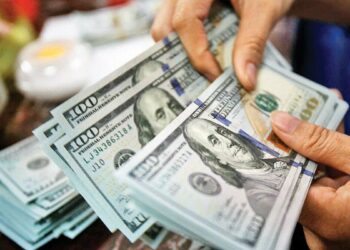
Most Americans rely on retirement accounts as a way to eventually stop working without falling into poverty. For the rich, they’ve become something more — a powerful tool to avoid taxes and pass on wealth to heirs.
More than $279 billion sits in mega-IRAs, individual retirement accounts with at least $5 million each, according to Congress’s nonpartisan Joint Committee on Taxation. Despite rules designed to limit IRA contributions by the wealthy, almost 29,000 Americans hold these giant accounts, and nearly 500 of them somehow managed to get $25 million or more into their IRAs.
Democrats in Washington are trying to thwart the trend of ever-larger IRAs. A tax plan approved by the House Ways and Means Committee on Wednesday includes limits on their use by the wealthy, including a provision that would impose restrictions on retirement accounts whose value exceeds $10 million.
Before Congress floated these new rules, the once-humble IRA was getting a lot of attention from the wealthy, their advisers say, thanks to Democrats’ and President Joe Biden’s other proposals to hike taxes on the rich, and especially on their investment gains. That’s because an IRA, particularly the coveted Roth IRA, creates a pool of assets that can be bought, sold and spent with zero tax consequences.
“You get tax-free growth and tax-free distributions for the rest of your years,” Nicole Gopoian Wirick, a financial planner who is president of Prosperity Wealth Strategies, said of Roth IRAs. Converting assets into the accounts “has become a really hot topic these days.”
Favoring the Rich
The new rules on IRAs would slow the flow of assets into mega-IRAs — if the changes survive the legislative process and become law. Senate Democrats have signaled they’re considering similar plans. The lawmakers’ concern, shared by some tax experts, is that a system created to help the middle class retire now lavishes too many perks on the richest of the rich.
“These tax-favored vehicles deliver a windfall to individuals at the very top of the income distribution, exacerbating already wide inequalities,” Urban-Brookings Tax Policy Center senior fellow Steven Rosenthal and University of Chicago law professor Daniel Hemel wrote in an analysis for the Senate Finance Committee last month. “Mega-IRAs are a symptom of an even more serious disease: a retirement savings system that disproportionately favors the rich.”
The retirement gap between the affluent and everyone else has steadily widened over the last 30 years. In 1989, the richest tenth of Americans held 6.5 times more in IRAs and other retirement accounts than savers in the 50th to 75th percentile by net worth. By 2019, according to the Federal Reserve Survey of Consumer Finances, the gap between the richest 10% and the middle had ballooned to 12 times.
Retirement Inequality
Average U.S. retirement savings account balances by net worth percentile
Getting more than a few million dollars into an IRA used to be difficult, if not impossible, for all but extraordinarily lucky investors. The U.S. retirement system was built with strict limits on how much can be contributed to an IRA or a similar 401(k) account.
Roth IRAs were especially difficult for the wealthy to access, mostly because their tax benefits are so potent: Once an investment is inside a Roth account, your gains are never taxed as long as you live. Even after you die, your heirs get to live off a Roth IRA’s tax-free bounty for a decade.
For ultra-wealthy Americans looking to get their fortunes within the cushy confines of a Roth IRA, the most extreme example may be billionaire Peter Thiel. According to a ProPublica report in June citing confidential tax records, he amassed $5 billion in a Roth — a feat accomplished by placing PayPal shares in his account in 1999, when it was a private company. Within a year, their value jumped from $1,664 to $3.8 million.
Thiel, who is worth more than $7 billion, according to the Bloomberg Billionaires Index, later used the Roth account to invest in similarly lucrative stakes in Facebook Inc. and Palantir Technologies Inc.
Tax-Free Growth
When clients bring up Thiel with Brandon Smith, director of estate planning at Wetherby Asset Management in San Francisco, he has to be real with them: “I don’t know that we can replicate that result. We don’t have access to early rounds of PayPal. But you will still get the benefit of tax-free growth.”
In Silicon Valley, filings show, startup founders and venture capitalists have tried to follow a strategy like Thiel’s. Dustin Moskovitz, the co-founder of Facebook whose net worth is more than $27 billion, has a Roth IRA that holds about $285 million in shares of Asana Inc., the task-management software company he co-founded in 2008, according to filings.
While building a multi-billion-dollar Roth IRA is a nearly impossible task, the super wealthy can easily steer millions into the accounts. The key is to first amass wealth in traditional retirement accounts, then convert them into a Roth IRA. Both are now possible thanks to Congress, which has steadily weakened the rules on IRAs over the past few decades.
A traditional IRA — along with a traditional 401(k)-style workplace retirement account, which works similarly and can be rolled over into an IRA — takes pre-tax dollars. By contributing, you lower your tax bill and the accounts can be invested and grow tax-free — at least for a while. At some point, starting at age 72 at the latest, you need to start tapping your traditional IRA, and those withdrawals get taxed as income to you.
A Roth IRA, and Roth 401(k)s, are a mirror-opposite of the traditional accounts: Contributions are post-tax dollars — which don’t lower current your tax bill — but, once ensconced in a Roth they become off-limits to the IRS for as long as the account exists, which can be up to 10 years after you die. Once you’re 59-and-a-half years old, withdrawals are tax-free. Even if you’re not that old, there are ways to access the money for expenses like college costs.
Contribution Limits
Officially, you can’t contribute more than $6,000 to your IRAs this year, or $7,000 if you’re over 50. Those who earn more than $208,000 can’t contribute to Roth IRAs at all. Basic 401(k) plans also have limits, of no more than $19,500 in employee contributions in 2021, along with a $6,500 “catch-up contribution” for those age 50 or over.
In reality, these limits don’t apply to affluent Americans who over the last 20 years have been granted other options which, added up, can put more than $100,000 a year into retirement accounts. Business owners, including professionals like doctors and lawyers who are partners in their firms, can save more by maximizing employer contributions, including by setting up multiple types of plans. Another option for business owners or partners is a cash balance defined-benefit pension, which can lower your taxable income while also putting hundreds of thousands of dollars per year into an account that can later be rolled over into a traditional IRA.
Making Roth contributions this large used to be more difficult than adding to a traditional account. But then in 2006 Congress made it possible for anyone, including those with multi-million-dollar traditional IRA accounts, to convert them into Roth accounts. There’s one catch to a traditional-to-Roth conversion, however: You need to pay taxes on the amount you convert, just as you would if you withdrew the money normally.
That can be a hard sell, advisers say. “No one wants to raise their hands to pay a voluntary tax to Uncle Sam,” said Gopoian Wirick. However, there are ways to soften the blow: You can time your Roth conversion to coincide with other losses that offset the higher tax bill, or you can pair the Roth conversion with charitable contributions, including to a donor-advised fund that doesn’t need to go out to charity right away.
“A lot of clients are just waiting to hit the button and convert a traditional IRA into a Roth IRA,” said Alvina Lo, chief wealth strategist at Wilmington Trust. The strategy is “a good idea especially if tax rates go up and there’s a long investment horizon.”
One factor holding the wealthy back from fully embracing Roth conversions, Lo said, is high valuations in the stock market, where a sell-off would lower the tax bite. Another concern is that Democrats will follow through and put some limits on mega-IRAs. “We need to be thoughtful about what risks we’re taking,” Wetherby’s Smith said.








